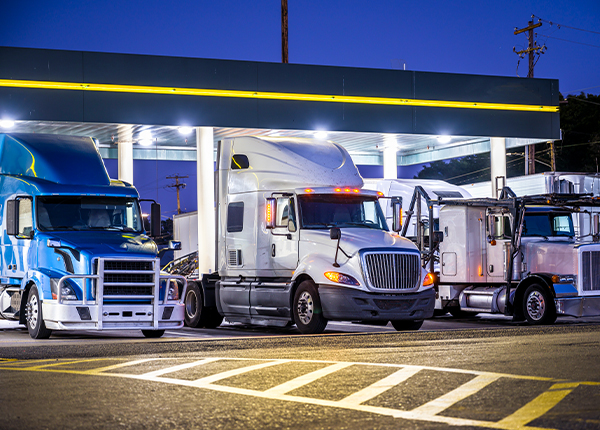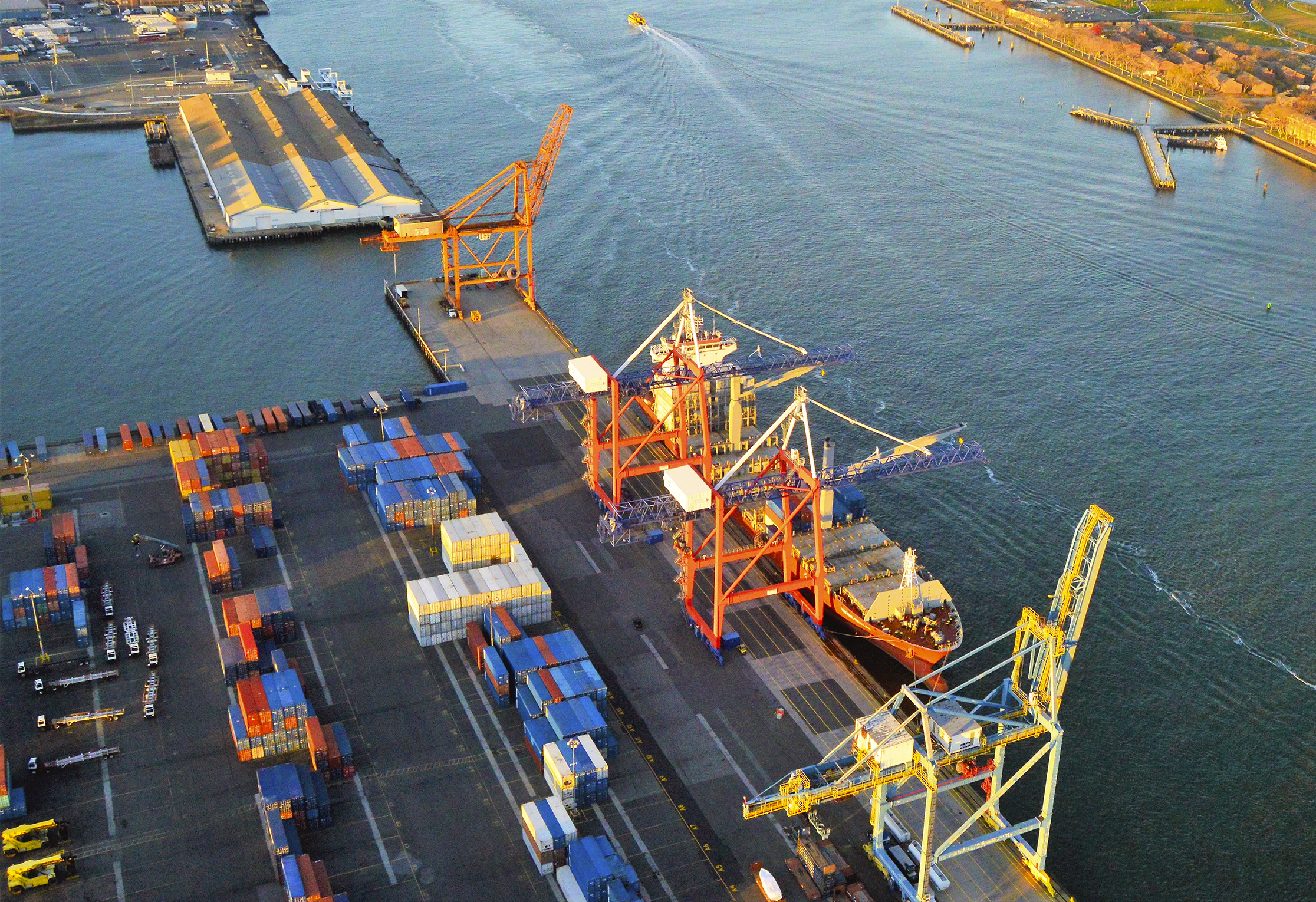
Top Driver Safety Technologies to Add to Your Fleet
By Alliant Specialty
Listen to the audio version:
Safety isn’t just a best practice to strive for in the trucking industry; it’s becoming a wide-spread norm. According to the American Trucking Association in their Safety Spend Survey, the trucking industry invests $14 billion annually in technology, training and other expenditures to improve highway safety.
As trucking companies strive to improve safety standards, leveraging the latest technological advancements is crucial. These innovations not only enhance driver safety, but also ensure regulatory compliance, reduce operational costs (potentially including insurance premiums) and improve overall efficiency. Even though the top technologies comes with an upfront cost, your fleet will be saving money in the long-term, pushing you closer to realizing your goals.
Leading Driver Safety Technologies
1. Advanced Driver Assistance Systems (ADAS)
Advanced Driver Assistance Systems (ADAS) are revolutionizing the trucking industry. These driver safety technologies utilize sensors, cameras and artificial intelligence to assist drivers in various ways. Some types of ADAS can be installed on your existing vehicles, while others must be factory installed, so fleets will need to investigate these systems when going through a trade cycle.
Some of the most critical types of ADAS systems include:
- Automatic Emergency Braking (AEB): This technology detects potential collisions and automatically applies the brakes to prevent or mitigate an accident. It is especially useful in preventing rear-end collisions, a common type of accident in trucking.
- Lane Departure Warning (LDW): LDW systems monitor the truck’s position within its lane and alert the driver if the vehicle starts to drift unintentionally. This is critical for preventing accidents caused by drowsiness or distraction.
- Blind Spot Detection (BSD): BSD systems use sensors to monitor the truck’s blind spots, alerting the driver to the presence of other vehicles. This significantly reduces the risk of side collisions during lane changes.
Studies have shown that ADAS systems can significantly aid drivers in preventing accidents and making the roads safer for all. According to the National Highway Administration (NHTSA), AEB systems are estimated to prevent more than 11,000 crashes, 7,700 injuries and 170 deaths involving heavy vehicles. In addition, a study from the University of Michigan found that LDW systems reduced lane departure-related crashes by 20%. With their proven track record, it’s clear that ADAS devices can significantly transform a fleet’s safety record.
2. Collision Mitigation Systems
Collision Mitigation Systems (CMS) combine radar and camera technology to monitor the road ahead. If the system detects an impending collision, it provides visual and auditory warnings to the driver. This proactive approach to safety helps prevent accidents before they occur.
3. Telematics and Fleet Management Software
Telematics technology provides real-time data on vehicle location, speed and performance. By integrating telematics with fleet management software, companies can monitor driver behavior, optimize routes and schedule maintenance proactively. This not only improves safety, but also enhances operational efficiency.
4. Onboard Cameras
Onboard cameras, including both inward-facing and outward-facing systems, are becoming increasingly prevalent driver safety technologies in the trucking industry.
- Outward-facing cameras provide a continuous record of road conditions and other vehicles, which can be invaluable in the event of an accident by providing clear evidence of fault.
- Inward-facing cameras monitor driver behavior and can detect signs of distraction, drowsiness or non-compliance with safety protocols.
These cameras not only enhance accountability, but also serve as a critical training tool, allowing companies to review footage and provide targeted feedback to drivers. By promoting transparency and accountability, onboard cameras significantly contribute to safer driving practices.
5. Fatigue Monitoring Systems
Fatigue is a significant risk factor in trucking. It’s estimated that drowsy driving accounts for 328,000 crashes annually, according to a study conducted by the AAA Foundation for Traffic Safety. These fatigue-related crashes are estimated to cost society $109 billion annually.
Fatigue monitoring systems use cameras and sensors to track the driver’s eye movements and head position. If signs of drowsiness are detected, this driver safety technology alerts the driver, helping to prevent accidents caused by fatigue.
6. Predictive Maintenance
Predictive maintenance uses data analytics and IoT (Internet of Things) sensors to predict when a truck is likely to need maintenance. By addressing issues before they lead to breakdowns or accidents, predictive maintenance ensures that trucks are always in optimal condition. This enhances safety and reduces downtime and maintenance costs.
7. Advanced Tire Pressure Monitoring Systems (TPMS)
Maintaining proper tire pressure is crucial for safety and fuel efficiency. Advanced TPMS provide real-time monitoring of tire pressure and temperature, alerting drivers to any issues that need attention. This prevents blowouts and other tire-related accidents.
8. Driver Training and Simulation
Modern driver training programs now incorporate virtual reality (VR) and simulation technology. These driver safety tools provide immersive, hands-on experience in a controlled environment, allowing drivers to practice handling various scenarios safely and hone strategies like defensive driving. Continuous training ensures that drivers are always prepared for the challenges they may face on the road, such as poor driving behavior and risks like cargo theft during stops.
Alliant Can Help You Maximize Benefits from Driver Safety Technologies
The adoption of these cutting-edge driver safety technologies is not just an option but a necessity for modern trucking companies. In a highly competitive industry, prioritizing safety through technology not only protects lives, but also strengthens the company’s reputation and bottom line. As technology continues to evolve, staying ahead of the curve in safety innovations will be a defining factor for successful trucking operations.
For more information, visit www.Alliant.com
Alliant note and disclaimer: This document is designed to provide general information and guidance. Please note that prior to implementation your legal counsel should review all details or policy information. Alliant Insurance Services does not provide legal advice or legal opinions. If a legal opinion is needed, please seek the services of your own legal advisor or ask Alliant Insurance Services for a referral. This document is provided on an “as is” basis without any warranty of any kind. Alliant Insurance Services disclaims any liability for any loss or damage from reliance on this document.




